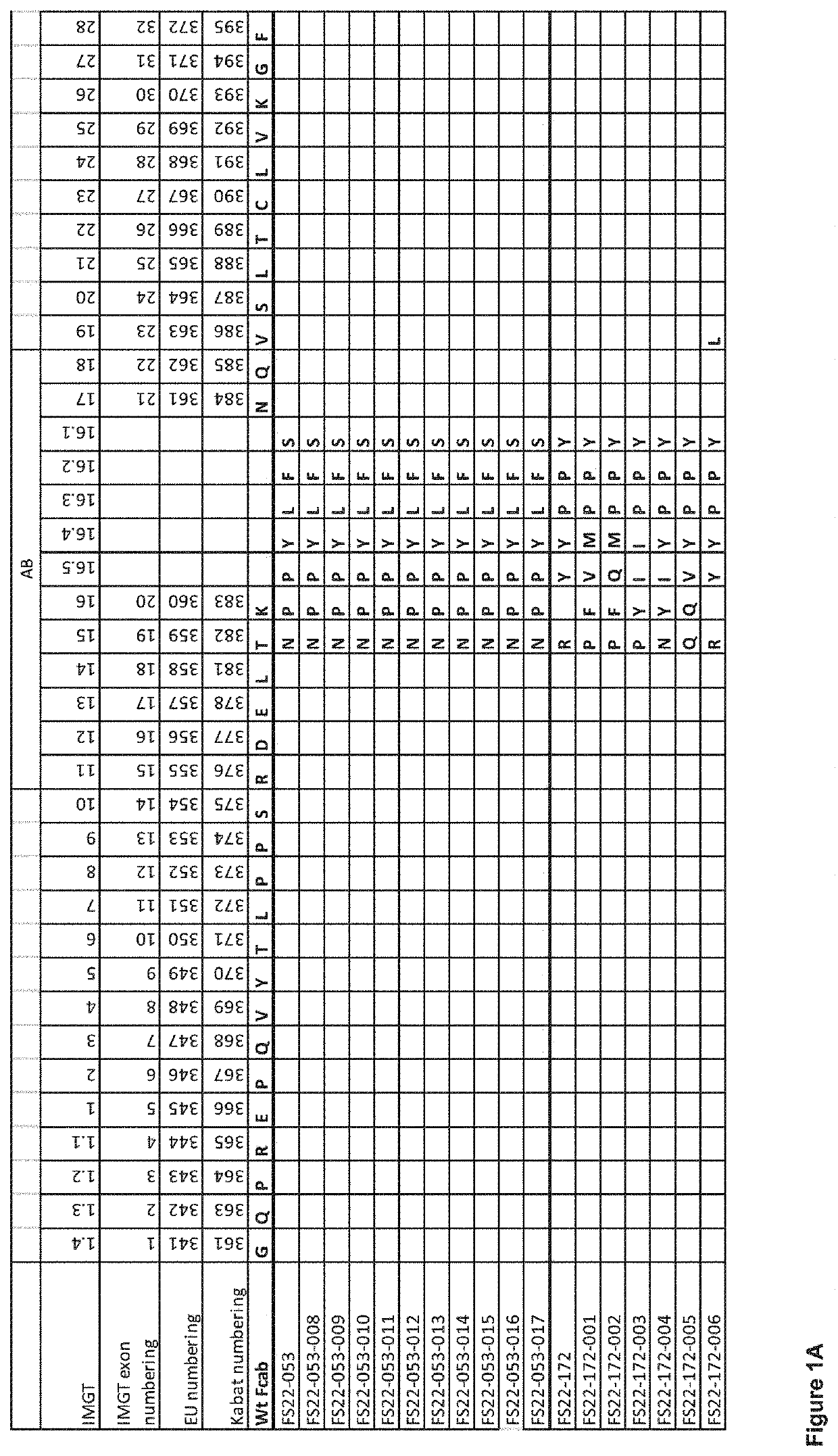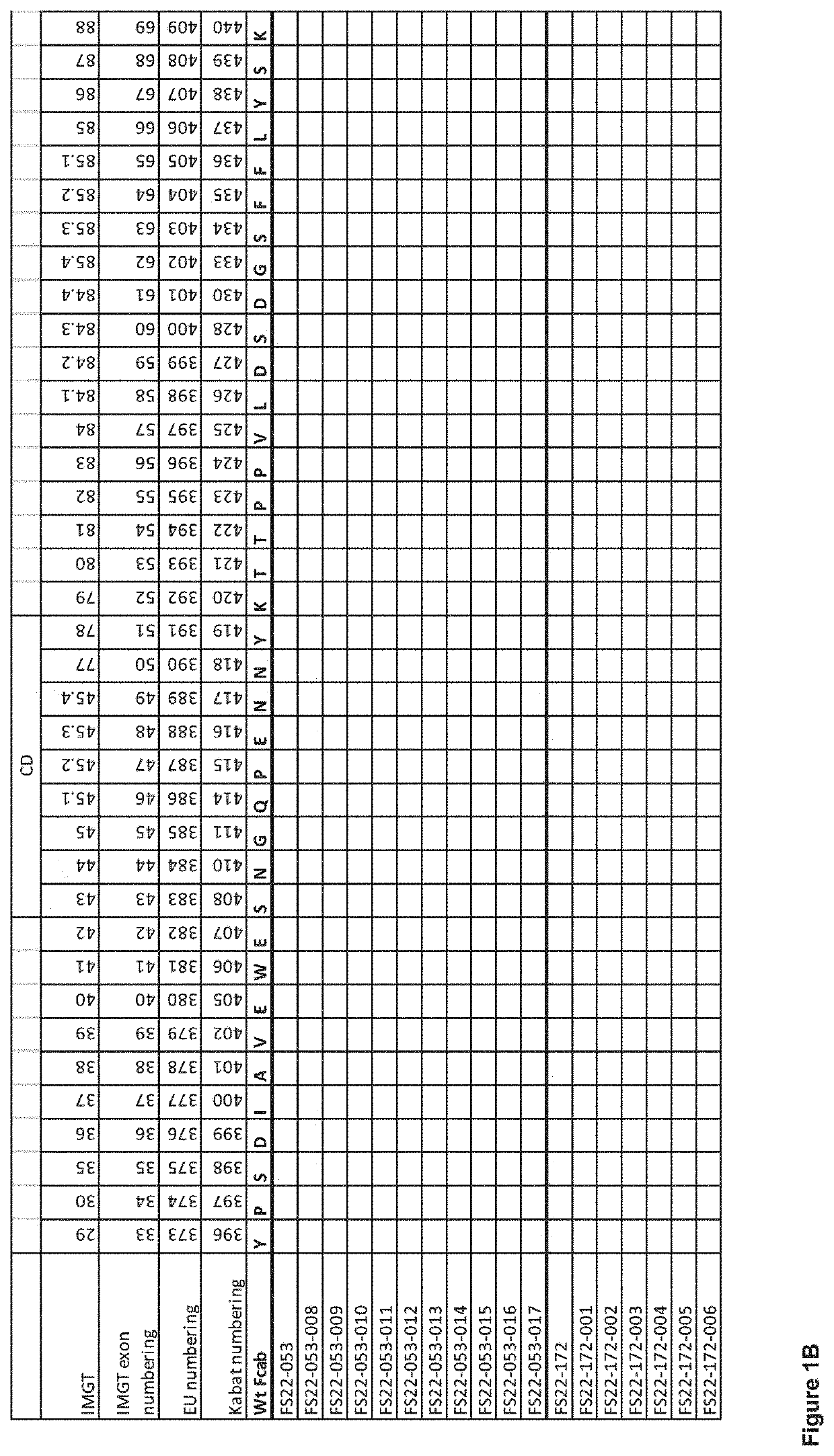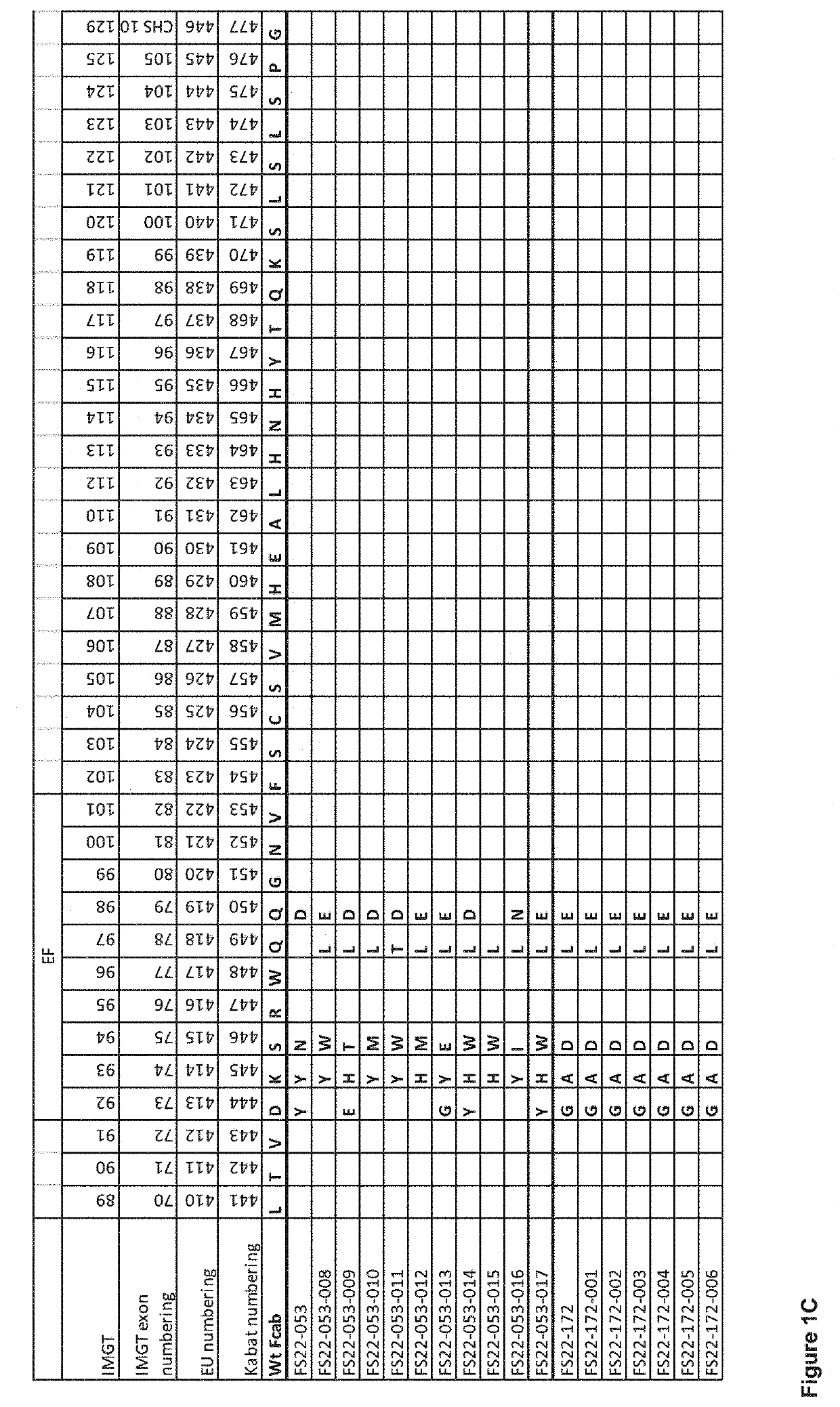Fc binding fragments comprising a cd137 antigen-binding site
a technology of cd137 and binding fragments, which is applied in the field of specific binding members, can solve problems such as liver inflammation, and achieve the effects of avoiding liver inflammation, suppressing tumour growth, and effective tumour growth suppression
- Summary
- Abstract
- Description
- Claims
- Application Information
AI Technical Summary
Benefits of technology
Problems solved by technology
Method used
Image
Examples
example 1
n, Characterisation and Selection of Human, Mouse and Cyno Antigens
1.1 Recombinant Antigens
[0404]Tumour necrosis factor receptor superfamily (TNFRSF) members are known for their tendency to form multimers which cluster together when bound to their cognate ligands (Croft, M. 2003). This propensity to aggregate for their functionality makes it challenging to produce soluble recombinant proteins that do not aggregate in solution for use in in vitro selections such as phage and yeast display and for characterisation of selected proteins.
[0405]Several commercially available recombinant antigens were tested and the majority found to be unsuitable for use in these selections due to the levels of aggregates present. Of those tested only the biotinylated, human secreted CD137, hFc-fusion protein (BPS Biosciences, catalogue no. 71171), designated ‘hCD137-hFc-Avi-BPS’ hereinafter, had sufficiently low aggregation to be suitable and was used in selections, though with limited success (see Examp...
example 2
ection of Anti-Human CD137 Fcabs
[0415]In order to find Fcabs that bind to human CD137, and to maximise the diversity of identified binders, both yeast and phage display selection campaigns were employed. Since CD137 is expressed at low levels in a number of non-immune cell types, it was decided to select for anti-human CD137 Fcabs that selectively target cells that expressed CD137 abundantly, such as activated T cells. Without wishing to be bound by theory, it was hypothesised that cells with very low or negligible levels of CD137 expression would be more likely to have CD137 in monomeric state on their cell surface, unlike activated T cells with highly upregulated CD137 expression, where most of the protein is expected to be present in dimeric, trimeric, or higher multimeric states on the cell surface.
[0416]Cells overexpressing CD137, or recombinant dimeric human CD137 proteins, were used in Fcab selections in order to expose those representative epitopes that facilitated binding i...
example 3
isation of Anti-Human CD137 Fcabs from Naïve Selections
[0429]3.1 Preparation of Anti-Human CD137 Fcabs in “Mock” mAb2 Format
[0430]“Mock” mAb2 antibodies consisting of IgG1 molecules comprising the 76 anti-human CD137 Fcab clones isolated from phage and 9 clones isolated from yeast selections were produced to allow characterisation of the Fcabs in a mAb2 format. The mock mAb2 were prepared by substituting part of the CH3 domain Fcabs comprising the AB, CD and EF loops, for the corresponding region of the CH3 domain of the anti-hen egg lysozyme antibody HeID1.3. Generation of the HeID1.3 antibody is described in Tello et al. 1993 The heavy and light chain sequences of antibody HeID1.3 are shown in SEQ ID 186 and 173, respectively. The mock mAb2 molecules were produced by transient expression in HEK293-6E cells. To assess the amount of protein produced, IgG protein content was quantified by BioLayer Interferometry using the Octet QKe platform with Protein A quantitation biosensors from...
PUM
| Property | Measurement | Unit |
|---|---|---|
| Molar density | aaaaa | aaaaa |
| Molar density | aaaaa | aaaaa |
| Molar density | aaaaa | aaaaa |
Abstract
Description
Claims
Application Information
 Login to View More
Login to View More - R&D
- Intellectual Property
- Life Sciences
- Materials
- Tech Scout
- Unparalleled Data Quality
- Higher Quality Content
- 60% Fewer Hallucinations
Browse by: Latest US Patents, China's latest patents, Technical Efficacy Thesaurus, Application Domain, Technology Topic, Popular Technical Reports.
© 2025 PatSnap. All rights reserved.Legal|Privacy policy|Modern Slavery Act Transparency Statement|Sitemap|About US| Contact US: help@patsnap.com



